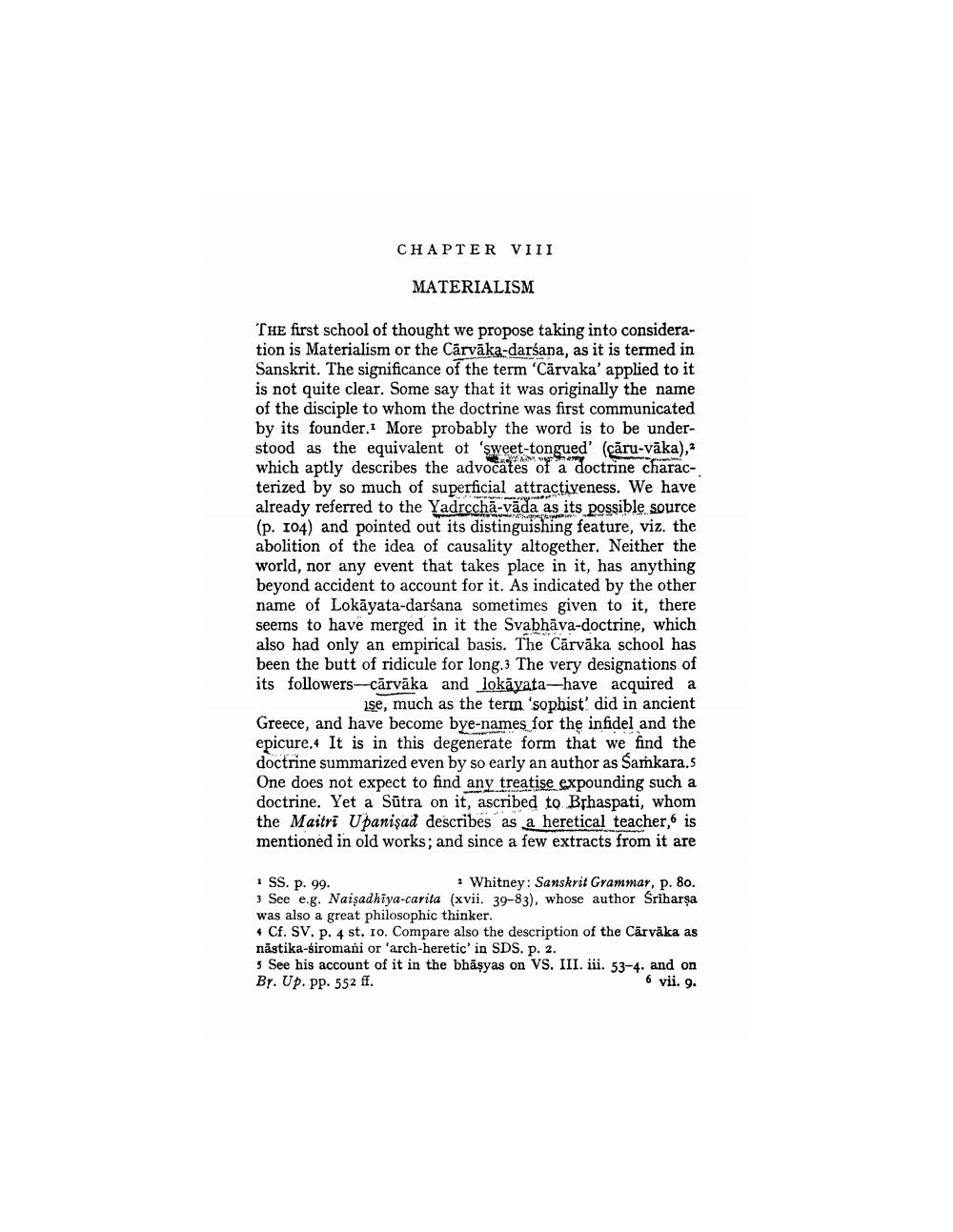________________
CHAPTER VIII
MATERIALISM
THE first school of thought we propose taking into consideration is Materialism or the Carvāka-darśana, as it is termed in Sanskrit. The significance of the term 'Cārvaka' applied to it is not quite clear. Some say that it was originally the name of the disciple to whom the doctrine was first communicated by its founder. More probably the word is to be understood as the equivalent of sweet-tongued' (çāru-vāka), which aptly describes the advocates of a doctrine characterized by so much of superficial attractiveness. We have already referred to the Yadrcchā-vāda as its possible source (p. 104) and pointed out its distinguishing feature, viz. the abolition of the idea of causality altogether. Neither the world, nor any event that takes place in it, has anything beyond accident to account for it. As indicated by the other name of Lokāyata-darśana sometimes given to it, there seems to have merged in it the Svabhāva-doctrine, which also had only an empirical basis. The Cārvāka school has been the butt of ridicule for long.3 The very designations of its followers--cārvāka and lokāyata-have acquired a
ise, much as the term 'sophist' did in ancient Greece, and have become bye-names for the infidel and the epicure. It is in this degenerate form that we find the doctrine summarized even by so early an author as Samkara.5 One does not expect to find any treatise expounding such a doctrine. Yet a Sūtra on it, ascribed to Bhaspati, whom the Maitri Upanişad describes as a heretical teacher, is mentioned in old works, and since a few extracts from it are
SS. P. 99.
Whitney: Sanskrit Grammar, p. 80. 3 See e.g. Naişadhiya-carita (xvii. 39-83), whose author Sriharsa was also a great philosophic thinker. • Cf. SV. p. 4 st. ro. Compare also the description of the Cärväka as năstika-siromani or 'arch-heretic' in SDS. P. 2. 5 See his account of it in the bhāşyas on VS. III. iii. 53-4. and on By. Up. pp. 552 ff.
6 vii. 9.




